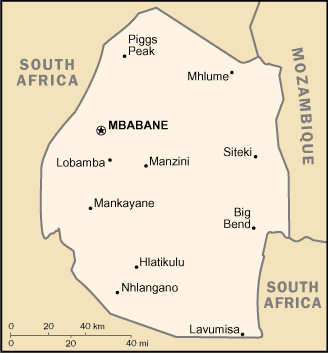Its climate and topography are diverse, ranging from a cool and mountainous highveld to a hot and dry lowveld. The population is composed primarily of ethnic Swazis. The prevalent language is Swazi (siSwati in native form). The Swazis established their kingdom in the mid-18th century under the leadership of Ngwane III. The country and the Swazi take their names from Mswati II, the 19th-century king under whose rule the country was expanded and unified; its boundaries were drawn up in 1881

|
|
|
Economy:
It is fairly diversified. Agriculture, forestry and mining account for about 13 percent of Eswatini's GDP whereas manufacturing (textiles and sugar-related processing) represent 37 percent of GDP. Services – with government services in the lead – constitute the other 50 percent of GDP.Title Deed lands, where the bulk of high-value crops are grown (sugar, forestry, and citrus) are characterized by high levels of investment and irrigation, and high productivity
|
|
.jpg)
|
|
|

.png)

.jpg)

